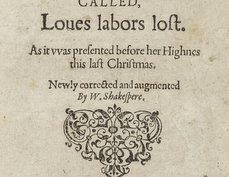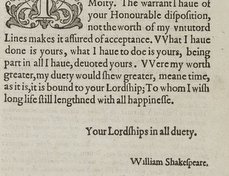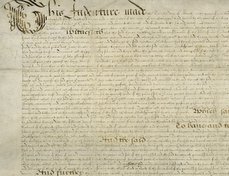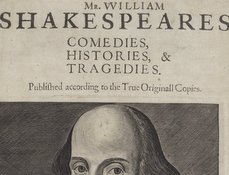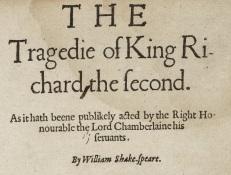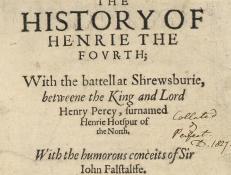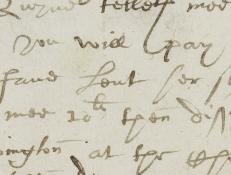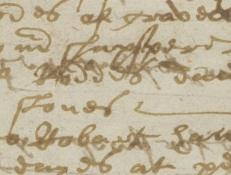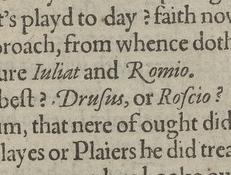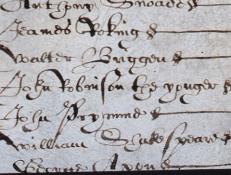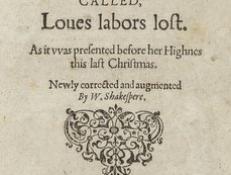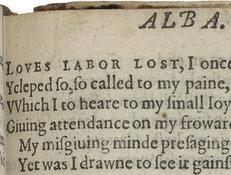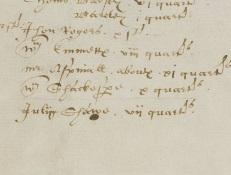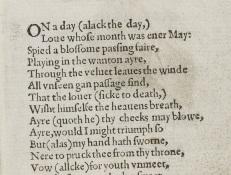Shakespeare Documented is still growing! Currently, two thirds of the descriptions and 98% of the images are available in the resource. Descriptive text will continue to be added, updated and expanded. Visit our About page to learn more about the project scope.
EXPLORE THE DOCUMENTS BY CATEGORY
SHAKESPEARE DOCUMENTED IS STILL GROWING
Descriptive content and transcriptions will continue to be added, updated and expanded. Check back for regular updates!
Filter the documents by tag(s)
1598
Shakespeare’s Richard II was printed in a third quarto edition in 1598, the same year as its second edition. As was the case with the first two editions, London bookseller Andrew Wise was the publisher.
1598
This edition of Henry IV Part 1 is the earliest printed version of the play to survive fully intact.
November 24, 1598
While in London during the autumn of 1598, Richard Quiney received at least four letters from Daniel Baker, written on October 17, October 26, November 13 and November 24, the last of which is shown here. Baker addresses Quiney as his uncle, and refers to Quiney’s wife as his aunt.
1598
The borough chamberlain, in his accounts submitted in January 1598, included an entry that at some point in the previous twelve months he paid “Mr Shaxpere” 10 pence for “on lod of ston,” one of a set of five payments made towards the repair of the bridge over t
1598
SHAKESPEARE DOCUMENTED IS STILL GROWING! Descriptive content and transcriptions will continue to be added, updated and expanded. Check back for regular updates!
October 1, 1598
Lay subsidies were a type of tax based on personal wealth. In London, the collection of subsidies was managed at the local level of ward and parish.
1598
Love’s Labor’s Lost, first edition: One of the first instances of Shakespeare's name on a title page
William Shakespeare's name first appeared on the title pages of three plays in 1598, including this edition of Love's Labor's Lost. Fourteen copies of this edition are known to survive. The sub-title, "Newly corrected and augmented By W.
1598
The first description of a performance of Love’s Labor’s Lost appears in a sonnet sequence by Robert Tofte printed in 1598, the same year the play was first published.
February 4, 1598
In this 1598 survey of those storing grain in Stratford-upon-Avon, “W[illia]m Shackesp[ear]e” is listed as holding 10 quarters of malt.
1599
This is a fragment of the only surviving copy of the first edition of The Passionate Pilgrim (1599). An early owner bound it with other poetic works, including a 1600 edition of Shakespeare's Lucrece and the only surviving copy of the sixth editi

